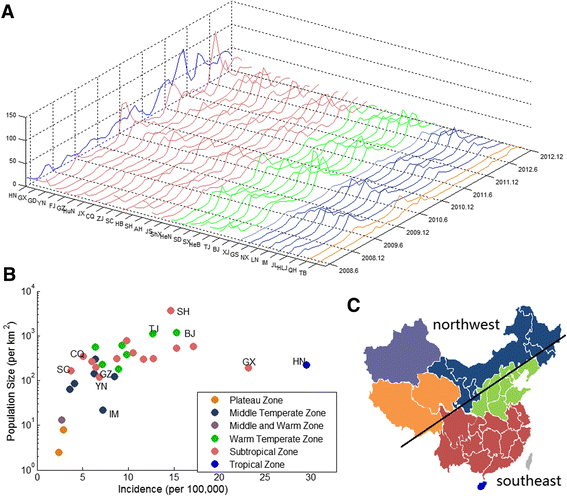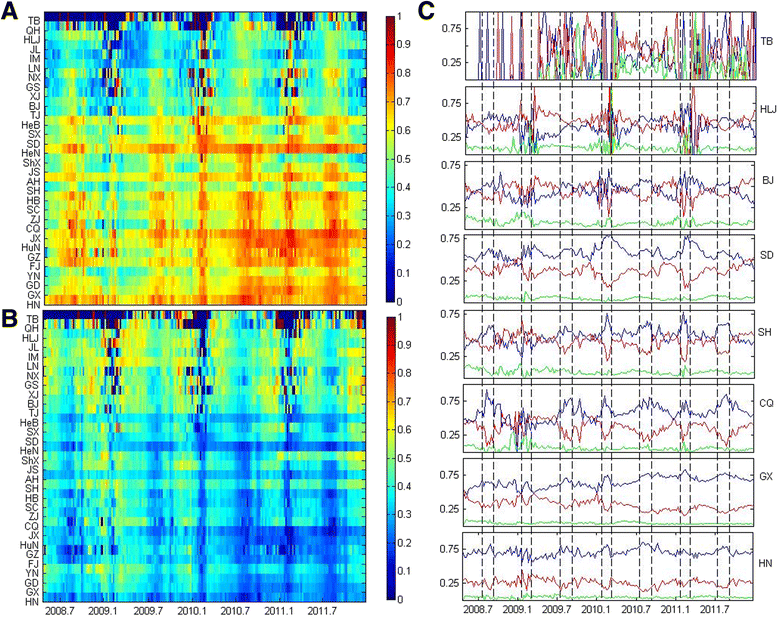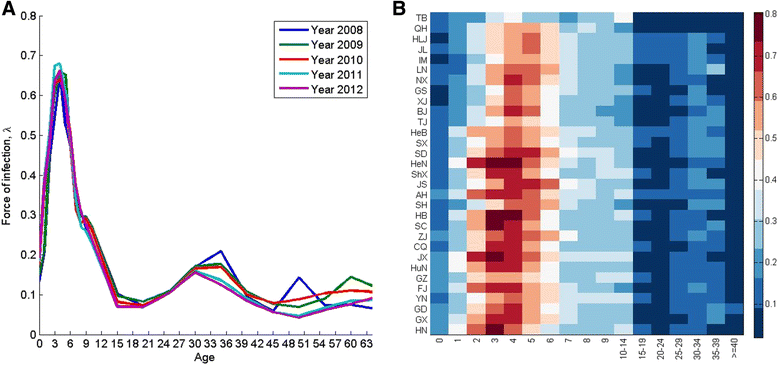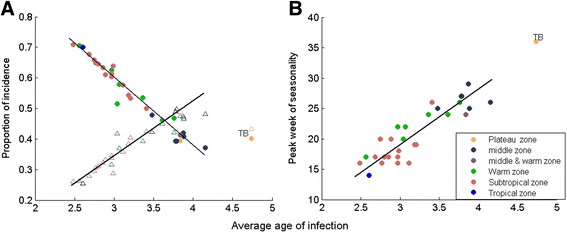Age patterns and transmission characteristics of hand, foot and mouth disease in China
- PMID: 27871252
- PMCID: PMC5117511
- DOI: 10.1186/s12879-016-2008-y
Age patterns and transmission characteristics of hand, foot and mouth disease in China
Abstract
Background: Hand, foot and mouth disease (HFMD) has circulated in China and caused yearly outbreak. To understand the transmission of the disease and to assess the spatial variation in cases reported, we examined age-specific transmission characteristics and reporting rates of HFMD for 31 provinces in mainland China.
Methods: We first analyzed incidence spatial patterns and age-specific incidence patterns using dataset from 2008 to 2012. Transmission characteristics were estimated based on catalytic model. Reporting rates were estimated using a simple mass action model from "Time Series Susceptible Infectious Recovered" (TSIR) modeling.
Results: We found age-specific spatial incidence patterns: age-specific proportions of HFMD cases varied geographically in China; larger case percentage was among children of 3-5 years old in the northern part of China and was among children of 0-2 years old in the southern part of China. Our analysis results revealed that: 1) reporting rates and transmission characteristics including the average age at infection, the force of infection and the basic reproduction number varied geographically in China; 2) patterns of the age-specific force of infection for 30 provinces were similar to that of childhood infections in developed countries; the age group that had the highest infection risk was 3-5 years old in 30 provinces, and 10-14 years old in Tibet; 3) a large difference in HFMD transmission existed between northwest region and southeast region; 4) transmission characteristics determined incidence patterns: the higher the disease transmission in a province, the earlier the annual seasonality started and the more case percentage was among children 0-2 years old and less among 3-5 years old.
Conclusion: Because HFMD has higher transmission than most childhood infections reported, high effective vaccine coverage is needed to substantially reduce HFMD incidence. Control measures before the vaccine implementation should focus on 2-6 years old children in 30 provinces and 10-14 years old children in Tibet.
Keywords: Average age at infection; Force of infection; Hand foot and mouth disease; Reporting rate.
Figures





References
-
- Chen SC, Chang HL, Yan TR, Cheng YT, Chen KT. An eight-year study of epidemiologic features of enterovirus 7 l infection in Taiwan. Am J Trop Med Hyg. 2007;77:188–91. - PubMed
-
- Ma E, Lam T, Chan KC, Wong C, Chuang SK. Changing epidemiology of hand, foot and mouth disease in Hong Kong, 2001–2009. Jpn J Infect Dis. 2010;63:422–6. - PubMed
MeSH terms
Substances
LinkOut - more resources
Full Text Sources
Other Literature Sources

